#MetaTrader 5 Demo
Explore tagged Tumblr posts
Text
Best forex trading platform for beginners 2024
The best forex trading platform for beginners offers intuitive interfaces, educational resources, and risk management tools. It prioritizes user-friendly navigation, enabling novices to grasp trading concepts easily. With comprehensive tutorials and demo accounts, it fosters skill development without financial risk. Additionally, it provides real-time market data and analysis tools to empower informed decision-making. This platform ensures a supportive environment for novice traders to thrive and learn effectively.

#best forex trading platform for beginners#forex trading app in india#best forex broker malaysia#best forex broker in the world#metatrader 5 brokers#trading demo account#lowest spread forex broker
2 notes
·
View notes
Text
#Vantage Markets#Vantage FX#forex broker#CFD trading#ECN broker#MetaTrader 4#MetaTrader 5#WebTrader#Vantage App#copy trading#Myfxbook AutoTrade#ZuluTrade#DupliTrade#VPS hosting#tight spreads#low commissions#ASIC regulated#FCA regulated#CIMA regulated#trading platforms#trading instruments#account types#leverage#demo account#trading 2025#broker review
0 notes
Text
Top Forex Brokers with Low Minimum Deposit: A Comprehensive Guide for Smart Traders
For many aspiring traders, the high barriers to entry in the forex market can be a major hurdle. That’s why finding reputable brokers with low minimum deposit requirements is crucial for beginners and budget-conscious investors. Starting with a smaller capital investment allows traders to test strategies, understand risk management, and explore trading platforms without significant financial exposure. In this guide, we delve into the top forex brokers that offer accessible entry points without compromising on quality, regulation, and performance.
Why Choose Brokers with Low Minimum Deposit?
Trading forex with a low initial investment is not only practical but also strategic. It offers an opportunity to:
Gain hands-on trading experience with real market conditions
Minimize financial risk while learning
Test a broker's platform and customer service before committing more funds
Choosing brokers with low minimum deposit requirements helps you transition from a demo account to live trading with minimal financial stress.

Top 5 Forex Brokers with Low Minimum Deposit
Eightcap Eightcap is a well-regulated forex and CFD broker known for its strong trading infrastructure and user-friendly platform. With a minimum deposit of just $100, it offers access to MetaTrader 4 and MetaTrader 5, along with competitive spreads and fast execution. Eightcap is also recognized for its integration with TradingView and Capitalise.ai, providing powerful analytical tools for traders.
FP Markets FP Markets combines affordability with professional-grade trading services. With a minimum deposit of $100, this broker offers both ECN and standard accounts. Traders benefit from tight spreads, deep liquidity, and access to both MT4 and MT5 platforms. FP Markets is licensed by ASIC and CySEC, ensuring a high level of trust and security.
FBS FBS stands out for its ultra-low entry barrier, offering accounts with a minimum deposit as low as $1. This makes it an attractive option for beginners who want to explore live trading with minimal risk. The broker provides cent, standard, and zero-spread accounts, catering to a range of trading strategies. FBS also offers frequent bonuses and promotions to enhance user experience.
XM XM is a globally recognized broker offering flexible account types and a low minimum deposit starting at just $5. The platform supports both MT4 and MT5, along with robust educational resources for traders at all levels. XM’s execution speed, regulatory compliance, and diverse asset offerings make it a favorite among budget-conscious traders.
IC Markets IC Markets is a top choice for serious traders looking for institutional-grade conditions with a relatively low capital requirement. A minimum deposit of $200 gives access to ECN-style trading with raw spreads starting from 0.0 pips. IC Markets is well-known for its deep liquidity, ultra-fast execution, and regulatory reliability.
Real-Life Success Story: From Small Beginnings to Sustainable Profits
Michael L., a 29-year-old graphic designer from the Philippines, started his trading journey with just $50 in an FBS cent account. Initially curious about forex, Michael chose FBS for its low deposit requirement and wide range of educational materials. He practiced consistently, followed risk management principles, and gradually built up his trading capital. After a year, Michael transitioned to a standard account and began earning steady returns. Today, he trades part-time and uses his profits to supplement his freelance income. His story is a testament to how brokers with low minimum deposit requirements can empower individuals to achieve financial goals through disciplined trading.
How to Evaluate Website Security When Choosing a Forex Broker
Ensuring the safety of your funds and personal data is critical when selecting a broker. Here’s how to assess whether a broker’s platform is secure:
Look for HTTPS in the URL, indicating encryption
Check for regulatory licenses from authorities like ASIC, CySEC, or FCA
Review privacy policies and data protection protocols
Ensure two-factor authentication is available for account login
Investigate the broker’s track record and reputation in online forums and review sites
Trustworthy brokers invest in cybersecurity infrastructure to protect their clients. Always prioritize safety when choosing where to trade.
Click Now
Frequently Asked Questions About Forex Brokers and Trading
What is a minimum deposit in forex trading? A minimum deposit is the smallest amount of money required to open a trading account with a broker. It varies across brokers and account types.
Are brokers with low minimum deposit safe? Many low-deposit brokers are regulated and trustworthy. Always check for licenses and read user reviews to ensure credibility.
Can I make a profit with a small trading account? Yes, but it requires strict risk management and realistic expectations. Profits may be small initially but can grow with experience.
Is it better to start with a demo account? Yes, using a demo account helps you understand the trading platform and market dynamics without risking real money. Transition to a live account once you feel confident.
What platforms do low minimum deposit brokers offer? Most offer MetaTrader 4 or 5, with some also providing web-based or proprietary platforms. Ensure the platform suits your trading style.
youtube
Conclusion: The Smart Path to Trading Success
Starting your forex trading journey doesn’t have to be financially intimidating. By choosing reliable brokers with low minimum deposit, you gain the flexibility to learn, experiment, and grow with minimal risk. Whether it’s Eightcap’s professional tools, FP Markets’ competitive conditions, FBS’s ultra-low entry, XM’s global reach, or IC Markets’ superior execution, each broker offers unique advantages. Your trading success starts with informed choices, and a low minimum deposit could be the first smart step in building a profitable trading future.
2 notes
·
View notes
Text
How Avatrade Can Help You Maximize Your Trading Profits
Top Benefits of AvaTrade: A Reliable Trading Platform
AvaTrade, established in 2006, has grown into a trusted online broker with a global presence. As a regulated broker, AvaTrade offers a secure and reliable trading environment, making it a preferred choice for both beginners and experienced traders. This article explores the top benefits of AvaTrade and how it can enhance your trading experience.
Top Benefits of AvaTrade
One of the top benefits of AvaTrade is its extensive range of trading instruments. Traders can access over 1,000 assets, including forex pairs, stocks, commodities, cryptocurrencies, and indices. This diverse selection allows traders to build a well-rounded portfolio and take advantage of various market opportunities. AvaTrade also provides competitive spreads starting from 0.9 pips and leverages up to 1:400, offering favorable trading conditions for all types of traders.
Another significant advantage of AvaTrade is its commitment to regulation and security. AvaTrade is regulated by multiple financial authorities worldwide, including the Central Bank of Ireland, the Australian Securities and Investments Commission (ASIC), and the Financial Services Authority (FSA) in Japan. These regulations ensure that AvaTrade adheres to strict standards of transparency and security, protecting traders' funds and personal information. Additionally, AvaTrade offers negative balance protection, preventing traders from losing more than their initial deposit, and segregates client funds to enhance security.
What Are the Top Benefits of AvaTrade?
When considering what are the top benefits of AvaTrade, it is essential to highlight its user-friendly trading platforms. AvaTrade offers a range of platforms to suit different trading styles and preferences. The MetaTrader 4 (MT4) and MetaTrader 5 (MT5) platforms are renowned for their advanced trading tools, customizable charts, and automated trading capabilities. AvaTradeGO, the mobile app, provides traders with the flexibility to trade on the go with real-time market data and intuitive interface. Furthermore, AvaTrade’s proprietary platforms, AvaTrade WebTrader and AvaOptions, offer unique features tailored to enhance the trading experience.
Another notable benefit of AvaTrade is its comprehensive educational resources. AvaTrade is dedicated to helping traders improve their skills and knowledge through a variety of educational materials, including video tutorials, eBooks, webinars, and market analysis. These resources are designed to cater to traders of all levels, from beginners looking to learn the basics to experienced traders seeking advanced strategies. AvaTrade also offers a demo account, allowing traders to practice their strategies with virtual funds before committing real money.
Enhance Your Trading Experience with AvaTrade
AvaTrade's exceptional customer support is another key benefit that enhances the trading experience. AvaTrade provides multilingual customer service 24/5 through various channels, including live chat, email, and phone. This ensures that traders can receive timely assistance and resolve any issues promptly. The broker’s dedication to customer satisfaction is evident in its high ratings and positive reviews from traders worldwide.
In summary, the top benefits of AvaTrade include its diverse range of trading instruments, strong regulatory framework, user-friendly trading platforms, comprehensive educational resources, and excellent customer support. These features make AvaTrade a reliable and attractive option for traders looking to navigate the financial markets with confidence. Whether you are a novice or an experienced trader, AvaTrade provides the tools and support needed to succeed in your trading journey.
For more information on AvaTrade and to start trading, visit the AvaTrade website
1 note
·
View note
Text
Master Forex Trading with a Foreign Exchange Demo Account
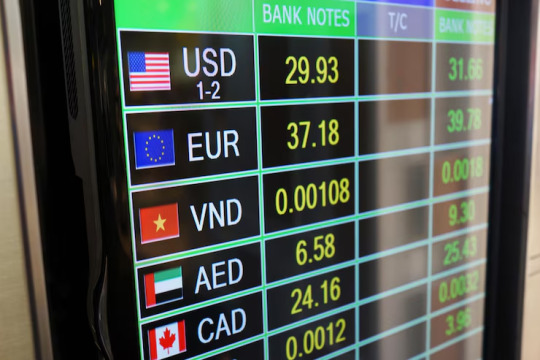
Are you new to forex trading or looking to refine your strategies before going live? A foreign exchange demo account is the perfect solution. With no financial risk and real-time market simulations, a demo account on forex allows beginners and experienced traders to gain confidence and improve performance before investing real money.
In today’s fast-paced financial world, learning through hands-on practice is invaluable. That’s why more traders are turning to demo trading as the foundation of their success.
What Is a Foreign Exchange Demo Account?

A foreign exchange demo account is a simulated trading platform that mimics real forex market conditions. Traders can place buy and sell orders, monitor real-time price movements, and test strategies—all without using real money.
This type of account helps users:
Understand trading platforms and tools
Practice risk management
Learn technical and fundamental analysis
Test strategies under various market conditions
Whether you are a beginner or an expert, demo trading ensures you understand how the market operates without facing financial losses.
Why Use a Demo Account on Forex?
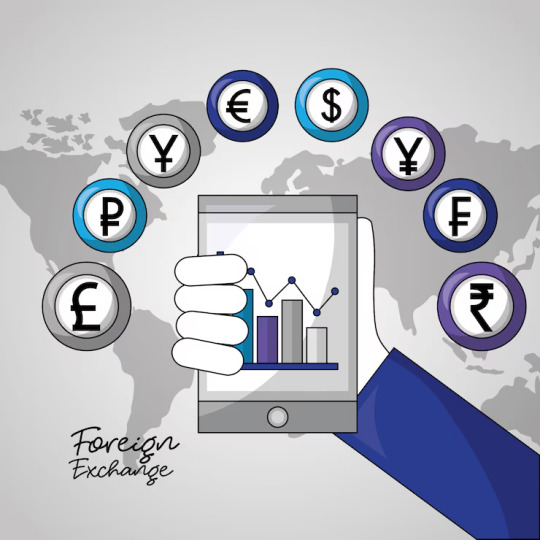
Many people wonder: Is a forex demo account really necessary? The answer is yes—especially if you're serious about building a solid trading foundation.
Here are the top benefits of using a demo account on forex:
✅ Risk-Free Environment
You can experiment with new strategies without fear of losing real money. This allows for a stress-free learning experience.
✅ Real Market Conditions
Most demo accounts simulate live market data. This enables you to get familiar with currency pair movements and volatility.
✅ Strategy Testing
Develop and refine your strategies before applying them in a live market. You can evaluate the effectiveness of different indicators and trading systems.
✅ Platform Familiarity
Get used to the broker’s trading interface, tools, and features. This minimizes errors when transitioning to a live account.
✅ Build Trading Discipline
Using a foreign exchange demo account helps develop the patience, consistency, and discipline required to trade successfully.
How to Open a Demo Account on Forex?
Getting started with a demo account on forex is simple:
Choose a Reputable Broker Select a platform like Btcdana that offers realistic demo accounts.
Register for an Account Complete a quick sign-up form with basic details like your name and email.
Download the Trading Platform Use web-based platforms or download MetaTrader 4/5 or proprietary apps provided by the broker.
Start Trading Begin practicing with virtual funds immediately after setup.
Btcdana makes it easy to open a foreign exchange demo account with instant access and user-friendly tools tailored to both beginners and pros.
Common Mistakes to Avoid with Demo Accounts

While demo trading is beneficial, some users don’t use it effectively. Avoid these common mistakes:
Overtrading due to zero risk Treat the virtual funds as real money to develop proper habits.
Ignoring risk management Always apply stop-loss and take-profit techniques—even in practice.
Not reviewing trades Analyze both winning and losing trades to understand what works.
Staying too long in demo mode While practicing is important, you should eventually transition to a live account when ready.
When Should You Move to a Live Account?
Transitioning from a demo account on forex to a live trading environment should happen when:
You consistently make profitable trades in demo mode.
You understand market dynamics and trading psychology.
You're confident in your trading strategy.
You’ve developed emotional control and discipline.
Conclusion
A foreign exchange demo account is your entry point into the world of forex trading. Whether you're starting your trading journey or refining your strategies, demo accounts help you build confidence and skill without risking capital.
At Btcdana, we offer a realistic demo account on forex that mirrors live market conditions. Our platform is user-friendly and designed to support traders at all levels. Start practicing today and prepare yourself for successful live trading!
FAQs: Foreign Exchange Demo Account
1. Is a demo account free to use?
Yes, most brokers including Btcdana offer completely free demo accounts with virtual funds.
2. How long can I use the demo account?
It depends on the broker. Btcdana allows extended usage so you can practice at your own pace.
3. Can I reset my demo account balance?
Yes, most platforms offer the option to reset your virtual balance to continue learning and testing.
4. Are demo account results the same as live trading?
While the environment is similar, emotional factors and slippage in live trading can make the experience slightly different.
5. How much virtual money do I get in a demo account?
Typically, platforms offer between $10,000 to $100,000 in virtual funds. Btcdana provides a flexible balance to suit your preferences.
Ready to take the first step toward mastering forex trading? Open your foreign exchange demo account with Btcdana today and unlock your full trading potential in a risk-free environment.
0 notes
Text
Forextrading For Beginners Online
Forextrading For Beginners Online Forex trading for beginners online is a great way to start learning how to trade currencies from the comfort of your home. Forex, or foreign exchange trading, involves buying and selling currency pairs like USD/INR or EUR/USD with the goal of making a profit from price movements. Beginners can start by using demo accounts offered by many brokers, which allow practice trading without using real money. Online platforms like MetaTrader 4 (MT4), MetaTrader 5 (MT5), and broker apps such as Zerodha Kite or ICICI Direct offer educational tools, charts, and tutorials to help new traders understand the basics. Key concepts like pips, leverage, lot size, and risk management are essential for beginners to master. With patience, learning, and practice, anyone can begin their Forex trading journey online safely and confidently. Contact us Address – 1st Floor, The Sotheby Building, Rodney Bay, Gros-Islet, SAINT Lucia P.O Box 838, Castries, Saint Lucia Phone no – +97144471894 Website – https://winprofx.com/
0 notes
Text
Forex Broker Comparison Guide for Beginners in 2025
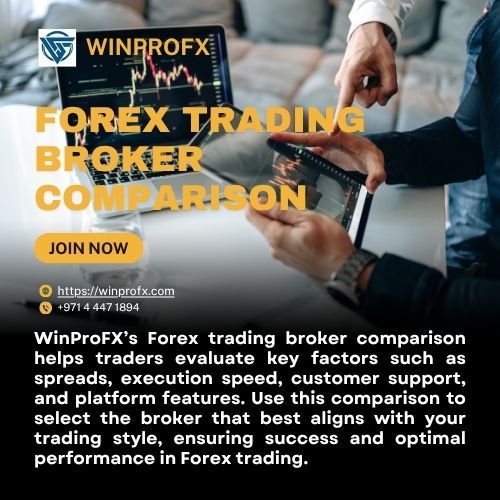
Entering the world of forex trading in 2025 can be both exciting and overwhelming, especially for beginners. With numerous brokers claiming to be the best, finding the right one requires careful research. At WinProFX, we simplify the journey for aspiring traders by providing a transparent and easy-to-understand comparison of top forex brokers. This guide is crafted to help beginners choose the most suitable broker to kickstart their trading journey with confidence.
Why Comparing Forex Brokers Matters
Not all forex brokers are created equal. Each broker offers different spreads, trading platforms, leverage options, regulatory frameworks, and customer support quality. As a beginner, these differences can significantly impact your trading experience and potential profits. Choosing the right broker ensures better execution speed, lower trading costs, and a more user-friendly platform.
Key Factors to Compare in 2025
1. Regulation and Trustworthiness
Ensure the broker is regulated by a reputed authority such as SEBI, FCA, ASIC, or CySEC. WinProFX only lists brokers that meet global safety and compliance standards, protecting your funds from scams.
2. Trading Platform
MetaTrader 5 (MT5) remains the most powerful platform in 2025 for beginners and professionals alike. Brokers integrated with MT5 offer better charting tools, automated trading options, and technical indicators. WinProFX partners with brokers that offer seamless MT5 integration.
3. Spreads and Fees
Compare brokers based on their spreads (difference between bid and ask price), commissions, and overnight fees. Lower spreads mean lower trading costs. WinProFX allows side-by-side comparisons so you can choose a cost-effective option.
4. Leverage Options
While leverage boosts potential profits, it also increases risk. Beginners should select brokers offering flexible and beginner-friendly leverage, such as 1:10 or 1:50, depending on their comfort level.
5. Deposit and Withdrawal Methods
Look for brokers offering quick and hassle-free funding options like UPI, Net Banking, Credit/Debit Cards, and e-wallets. WinProFX highlights brokers with instant deposit and fast withdrawal facilities.
6. Educational Support
The best brokers provide free webinars, tutorials, and demo accounts for learning. WinProFX evaluates brokers based on their education tools, helping you learn before you risk real money.
Why Trust WinProFX for Broker Comparison?
✅ Updated Reviews: Our research team evaluates broker performance, regulation status, and platform stability regularly.
✅ Transparent Ratings: Real user feedback and expert scores help you make an informed choice.
✅ India-Focused Options: We highlight brokers best suited for Indian traders, including INR deposit methods and support availability.
Final Thoughts
Choosing the right forex broker is the first and most crucial step for beginners in 2025. WinProFX makes this process simpler by offering unbiased, detailed comparisons that align with your trading goals. Whether you're looking for low-cost trades, a robust MT5 platform, or a safe trading environment — we've got you covered.
Contact Us WinProfx 1st Floor, The Sotheby Building, Rodney Bay, Gros-Islet, Saint Lucia P.O Box 838, Castries, Saint Lucia. +971 4 447 1894 [email protected] https://winprofx.com/
0 notes
Text
Forex Brokers Comparison for Beginners: Choosing the Right Path in 2025
Starting your forex trading journey can feel overwhelming, especially with the numerous brokers and platforms to choose from. For beginners, selecting the right broker is one of the most important steps toward successful and sustainable trading. A detailed forex brokers comparison for beginners is essential for identifying which brokers offer the right combination of security, ease of use, support, and affordability.
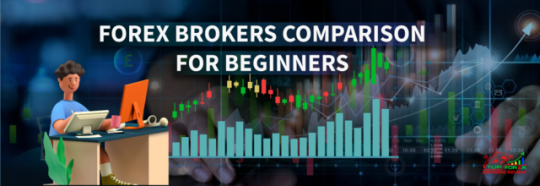
In this guide, we’ll help you understand what to look for, which platforms are beginner-friendly, and how to make informed decisions without risking your hard-earned capital.
What to Look for in a Beginner-Friendly Forex Broker
If you're just starting, it's crucial to evaluate brokers based on features tailored to beginners. Here are the key aspects to consider:
Regulation and Safety
Regulation is non-negotiable. Reputable forex brokers are licensed by well-known regulatory bodies such as CySEC, FCA, or ASIC. Choosing a regulated forex broker ensures your funds are protected and the company operates under strict guidelines.
For beginners, this level of trust is vital. Always verify a broker's regulatory status before opening an account.
Low Minimum Deposits
Starting small is smart. Look for low minimum deposit forex brokers that allow you to begin with $10–$100. This reduces risk and helps you learn without committing large sums.
Some beginner-friendly brokers even offer micro or cent accounts where you can trade smaller lot sizes. This is great for developing confidence while managing risk.
Easy-to-Use Trading Platforms
The trading platform is your main tool as a forex trader. Platforms like MetaTrader 4 (MT4) and MetaTrader 5 (MT5) are widely used and beginner-friendly. MT4 is especially suited for new traders because of its simple interface and massive tutorial library.
Some brokers also provide proprietary platforms or mobile apps that are intuitive and optimized for beginners. Trading platforms comparison is crucial to understanding which platform best suits your trading style.
MT4 vs MT5: Which Is Better for Beginners?
While both platforms are developed by MetaQuotes, there are slight differences that matter to beginners.
MT4 is known for its simplicity, making it ideal for traders who are just starting out.
MT5 offers more analytical tools and advanced order types, which may be helpful as you gain experience.
Beginners are often better off starting with MT4 and transitioning to MT5 as they grow.
Forex Broker Fees Explained
Understanding the cost of trading is just as important as finding a regulated broker. Forex brokers make money in several ways:
Spreads: This is the difference between the buying and selling price of a currency pair.
Commissions: Some brokers charge a flat fee per trade.
Swap/Overnight Fees: Charged when positions are held overnight.
Inactivity Fees: Some brokers penalize accounts that go unused for a period.
When doing a forex brokers comparison for beginners, make sure to understand whether the broker operates on a spread-only model or uses both spread and commission. The lower these fees are, the better for beginners who want to maximize every trade.
Demo Accounts: Practice Without Risk
Most top brokers offer demo account forex trading, allowing beginners to practice using virtual funds. This is one of the most valuable tools available when learning to trade.
Using a demo account, you can:
Learn how to place trades
Test strategies
Get used to platform navigation
You should spend a few weeks trading on a demo account before risking real money. Some brokers even offer unlimited demo access—perfect for those who want to learn at their own pace.
Choosing the Right Broker Features for Beginners
Besides platform and regulation, here are additional features to prioritize:
Educational content: Video tutorials, webinars, eBooks
Customer support: 24/5 live chat or local support
Mobile access: A reliable and easy-to-use mobile trading app
Account types: Micro or standard accounts suitable for small capital
User-friendly forex platforms will include built-in tutorials, streamlined order execution, and clear account management tools.
Common Mistakes Beginners Make When Choosing a Broker
Avoid these pitfalls when comparing brokers:
Falling for big bonuses without reading terms
Ignoring regulation
Choosing based solely on leverage (high leverage means higher risk)
Overlooking withdrawal terms and fees
Not testing the platform with a demo account
These errors can be costly and are easily avoided with a structured approach to broker comparison.
Top Tips for Comparing Forex Brokers
To make a smart decision, follow these tips:
Read real user reviews – Focus on reviews related to withdrawal speed, platform performance, and customer support.
Check the platform’s demo version – Make sure it’s easy to use and fits your trading style.
Evaluate customer service – Test their responsiveness before opening a live account.
Compare broker fees – Understand spreads, commissions, and hidden charges.
Don’t rush – Take time to understand how each broker aligns with your trading goals.
By applying these tips, you’ll be in a strong position to select a broker that fits your needs and budget.
Final Thoughts: Finding the Best Forex Brokers for Beginners
The forex brokers comparison for beginners is not about choosing the most popular broker—it’s about finding the one that offers the right balance of regulation, simplicity, affordability, and support.
Brokers like XM, HFM, and Eightcap, are known for beginner-friendly services, solid educational resources, and reliable platforms. But always do your own research and test things out through a demo account first.
As a beginner, your focus should be on learning, minimizing risk, and growing at a comfortable pace. With the right broker by your side, you can build a strong foundation for long-term forex trading success.
0 notes
Text
Forex Trading Courses Online: Is Currency Trading the Right Path for You?

The global forex (foreign exchange) market is the largest and most liquid financial market in the world, with over $6 trillion traded daily. Unlike stock markets that operate within a country's business hours, forex runs 24 hours a day, five days a week. The accessibility and fast-paced nature of this market attract many new traders every year.
But before jumping into currency trading, it's crucial to get the right education. And that’s where forex trading courses online come into play. Whether you're a complete beginner or an experienced stock trader curious about forex, an online course can help you understand how this market works and how to trade it with skill.
In this article, we’ll break down what to expect from an online forex trading course, who should take one, what makes the forex market unique, and which platforms offer the best training.
Why Forex Trading Deserves a Dedicated Learning Path
Forex is different from the stock or commodity markets in several key ways. Without understanding these distinctions, even experienced traders can struggle.
Here’s what sets the forex market apart:
24-hour trading cycle across global time zones
Currency pairs instead of individual assets (e.g., EUR/USD, GBP/INR)
High leverage options, often up to 100:1 or more in international accounts
Macroeconomic focus, with events like interest rate decisions, inflation data, and geopolitical news influencing price movements
Tight spreads and high liquidity, ideal for short-term trades
Because of this, jumping into forex without proper knowledge can lead to avoidable mistakes. That’s why a structured forex trading course online can help you understand the tools, strategies, and risks before placing real trades.
What You’ll Learn in a Forex Trading Course
A good forex trading course doesn’t just teach you how to read charts. It walks you through the complete trading cycle, including strategy development, trade execution, and risk control.
Here’s what a comprehensive forex course should include:
1. Forex Market Basics
What is forex and how does it work?
Major vs. minor vs. exotic currency pairs
How global economic events affect forex prices
2. Understanding Currency Quotes
Base currency vs. quote currency
Bid-ask spread and how brokers earn
Pips, lots, and leverage explained clearly
3. Trading Platforms and Tools
Using MetaTrader 4 (MT4) or MetaTrader 5 (MT5)
Setting up indicators and templates
Using demo accounts effectively
4. Technical and Fundamental Analysis
Chart patterns, moving averages, support/resistance
Economic indicators (GDP, CPI, interest rates)
News trading and event-based strategies
5. Risk Management and Trading Psychology
Position sizing techniques
Avoiding over-leveraging
Controlling emotions in a 24/5 market
6. Strategy Development
Scalping, day trading, and swing trading approaches
Backtesting your system
Journaling and reviewing trades for improvement
Who Should Take Forex Trading Courses Online?
Forex isn’t for everyone. It requires fast decision-making, awareness of global events, and tight discipline. But if you enjoy macroeconomics, want to trade outside stock market hours, or are looking for an alternative income stream, forex could be a good fit.
Here’s who benefits the most from an online forex course:
Stock traders transitioning into global markets
Working professionals who want to trade at night or early morning
Entrepreneurs or freelancers exploring a new income stream
Retirees looking to manage international currency exposure
Aspiring full-time traders building a diversified skillset
Best Platforms for Forex Trading Courses Online
Here are some trusted platforms offering forex-focused education:
1. Babypips.com – School of Pipsology
Arguably the most popular and beginner-friendly forex education site. Completely free and extremely comprehensive, it covers every stage from "preschool" to "graduation" levels.
Best for: Absolute beginners who prefer self-paced learning.
2. Elearnmarkets (India-Focused)
While not exclusively forex, they offer modules and webinars that touch on currency trading and how to apply technical tools across markets.
Best for: Indian learners who want contextually relevant insights.
3. Coursera – Financial Markets by Yale University
While not forex-exclusive, this course builds a strong foundation in how markets operate globally. Useful for understanding macroeconomic forces that affect forex.
Best for: Academic approach and macro-level understanding.
4. Udemy – Forex Trading A-Z
Highly rated and regularly updated, this course offers real MT4 platform tutorials, technical strategies, and quiz-based learning.
Best for: Budget learners wanting hands-on platform tutorials.
5. IG Academy
Offered by one of the world’s largest CFD brokers, IG’s free academy includes forex-specific courses with webinars and live Q&A sessions.
Best for: Those planning to open a forex trading account internationally.
What to Watch Out For
Forex courses—especially online—are often targeted by scammers or unrealistic marketers. Be cautious if you encounter:
“Guaranteed profit” claims
Flashy lifestyle ads showing luxury and fast cash
No clear explanation of who the instructors are
Courses that don’t include risk management modules
Pressure to buy signals or automated bots immediately
Stick to platforms that focus on education, not hype.
How to Maximize Your Learning
Here are a few tips to make the most out of your online forex course:
Use a demo account while learning: Practice on MT4 or TradingView without risking real money.
Create a journal: Record every trade, idea, and mistake. This helps build patterns and discipline.
Join discussion forums: Sites like ForexFactory or Reddit’s r/Forex offer valuable peer insights.
Don’t skip the boring stuff: Topics like money management and risk control may not be flashy but are essential.
Final Thoughts: Is Forex the Right Market for You?
The forex market offers endless opportunities—but only to those who approach it with the right mindset and education. If you’ve been curious about trading currencies or want to diversify beyond Indian equities, a solid forex trading course online can give you the edge you need.
It’s not about chasing big wins overnight. It’s about consistency, clarity, and risk-controlled strategy. With the right course, you don’t just learn how to trade—you learn how to think like a trader.
So if you're ready to explore global markets from your laptop, start by enrolling in a reputable forex course. Let knowledge, not noise, guide your trades.
#stock market#stock trading#share market classes#stock market courses#stock market course#investing stocks
0 notes
Text
How to Start a Forex Brokerage: A Complete Beginner’s Guide
The global foreign exchange (forex) market is one of the most active and liquid markets in the world. With daily trade volumes crossing $7 trillion, it offers tremendous potential for entrepreneurs. If you’ve ever wondered how to start a forex brokerage, this guide breaks down the essential steps, from legal setup to launching your platform successfully.
What Is a Forex Brokerage?
A forex brokerage is a company that enables clients to trade currencies through an online platform. The brokerage connects retail traders to the interbank market or liquidity providers, facilitates the trades, and earns revenue through spreads, commissions, and various service fees.
Why Start a Forex Brokerage?
Massive market opportunity
High profit margins
Recurring revenue from active traders
Global customer reach
Scalable business model
How to Start a Forex Brokerage in 7 Key Steps
1. Define Your Brokerage Model
Choose between:
Market Maker Model (Dealing Desk): You act as the counterparty to clients’ trades.
ECN/STP Model (No Dealing Desk): You connect clients directly to liquidity providers and earn from commissions.
2. Register Your Business and Get Licensed
To operate legally, register your company and obtain a forex broker license. Jurisdictions like:
Cyprus (CySEC)
UK (FCA)
Australia (ASIC)
Seychelles or Belize (for cost-effective offshore setup)
Each regulatory authority has different requirements for capital, compliance, and auditing.
3. Partner with Liquidity Providers
This is essential for smooth execution and tight spreads. Choose reliable partners who offer deep liquidity, fast execution, and access to multiple markets like forex, crypto, and commodities.
4. Choose a Trading Platform
Most brokers opt for MetaTrader 4 (MT4) or MetaTrader 5 (MT5), the industry-standard platforms. Alternatively, you can develop a custom platform for branding and control.
Ensure the platform has:
User-friendly UI
Real-time data
Risk management tools
Mobile and desktop compatibility
5. Set Up a Website and Client Portal
Create a professional website integrated with your trading platform. Include:
Account registration
KYC/AML verification
Client dashboard
Payment gateway integration
Educational content
6. Implement Back Office and CRM
An effective back-office system will help manage clients, track trades, and monitor compliance. A CRM system is essential for lead generation, customer support, and retention.
7. Launch and Market Your Brokerage
Once your infrastructure is ready, launch with a strategic marketing plan:
Use SEO, paid ads, and social media
Offer demo accounts and trading bonuses
Partner with IBs (Introducing Brokers) and affiliates
How Much Does It Cost to Start a Forex Brokerage?
Expense CategoryEstimated Cost RangeCompany Setup & License$20,000 – $100,000Trading Platform$5,000 – $50,000+Liquidity ProviderBased on volume/spreadWebsite & CRM$10,000 – $25,000Marketing & OperationsVariable (ongoing)
Final Thoughts
Learning how to start a forex brokerage requires a strong understanding of finance, compliance, and technology. With the right planning, legal structure, and partnerships, your brokerage can thrive in today’s competitive forex trading ecosystem. Whether you target retail traders, institutional clients, or niche regions, offering transparency, reliability, and support will be key to long-term success.
0 notes
Text
#FxPro#forex broker#CFD trading#MetaTrader 4#MetaTrader 5#cTrader#FxPro Edge#no dealing desk#NDD execution#negative balance protection#fast order execution#trading platforms#trading instruments#account types#leverage#spreads#demo account#trading tools#economic calendar#trading calculators#VPS#regulated broker#FCA#CySEC#FSCA#SCB#trading 2025#broker review
0 notes
Text
Top Forex Trading Platforms in Duba
Top Forex Trading Platforms in Dubai: A Smart Investor’s Guide to the Best in the Market
Dubai has transformed into one of the world’s most active financial and trading hubs. With a strong regulatory environment, zero income tax, and increasing investor interest, the city is a hotspot for financial markets—especially forex trading. If you are looking to dive into the global currency markets from the UAE, then identifying the most reliable forex trading platforms in Dubai is the first step toward building a successful trading journey.
This article serves as a practical and beginner-friendly guide for anyone curious about forex trading platforms in Dubai. Whether you're an expat, a resident, or a professional investor looking to expand your portfolio, understanding how to choose the right trading platform is essential.
Why Dubai Is Ideal for Forex Trading
Before diving into platforms, let’s understand why Dubai has become a magnet for traders.
Regulatory Safety: The UAE is home to trusted financial regulators like the Securities and Commodities Authority (SCA), Dubai Financial Services Authority (DFSA), and Abu Dhabi Global Market (ADGM).
No Capital Gains Tax: One of the biggest advantages for forex traders in Dubai is the absence of personal income and capital gains taxes.
Accessibility to Global Markets: Traders in Dubai can access forex markets around the world through top-tier brokers and platforms.
World-Class Infrastructure: Fast internet, advanced banking systems, and high levels of digital literacy make online trading efficient and seamless.
Top Features to Look for in Forex Trading Platforms
When evaluating forex trading platforms in Dubai, ensure the following essential features are included:
Regulation & Licensing: Make sure the platform is regulated by the SCA or is legally operating under DFSA or ADGM jurisdictions.
User-Friendly Interface: Whether you're a beginner or a professional trader, the trading interface should be intuitive and efficient.
Access to Tools & Charts: Advanced platforms offer a wide range of indicators, drawing tools, and real-time data for technical analysis.
Mobile & Web Compatibility: Ensure the platform supports mobile trading apps for iOS and Android.
Low Spreads & Fast Execution: Tight spreads and high-speed order execution can make a big difference in your profitability.
Popular Forex Trading Platforms in Dubai
Here are some of the most widely used and trusted forex trading platforms in the UAE:
1. MetaTrader 4 (MT4)
The most popular platform globally, MT4 is known for its reliability and ease of use.
Offers a wide range of indicators, customizable charts, and Expert Advisors (EAs) for automated trading.
Available through most brokers in Dubai.
2. MetaTrader 5 (MT5)
An upgraded version of MT4 with more features including multi-asset support.
Great for traders who want access to forex, stocks, and commodities in one place.
3. cTrader
Offers advanced charting tools, fast execution, and a sleek user interface.
Popular among experienced traders in Dubai looking for more analytical power.
4. SaxoTraderGO
Provided by Saxo Bank, this platform is designed for professional traders.
Includes access to forex, stocks, ETFs, and futures—all from one account.
5. Broker Proprietary Platforms
Many brokers also offer their own custom-built platforms tailored to the UAE market.
These usually feature Arabic language support, regional payment gateways, and local customer service.
How to Choose the Right Platform for You
Here’s a quick guide based on your experience level: Trader LevelRecommended PlatformReasonBeginnerMT4 or Mobile AppEasy to use, demo trading supportedIntermediateMT5 or cTraderMore tools, faster executionProfessionalSaxoTrader or ECN AccessAdvanced order types, deep liquidity
If you’re unsure, the team at SFBME can help you evaluate your needs and connect you to the most appropriate regulated platforms and brokers in Dubai.
The Role of Introducing Brokers in Platform Selection
Introducing Brokers (IBs) are partners that act as a bridge between the trader and the main brokerage firm. In Dubai, choosing a broker through a locally recognized IB such as SFBME brings several advantages:
Personalized Platform Guidance: IBs help you select, set up, and learn to use the platform that fits your strategy.
Free Education: Many offer webinars, tutorials, and training programs to help you become proficient in trading.
Local Support: You’ll have someone to speak to directly in case of technical issues or account questions.
Steps to Get Started with Forex Trading in Dubai
✅ Step 1: Choose a Regulated Broker
Pick a platform that’s either SCA-licensed or regulated by DFSA/ADGM.
✅ Step 2: Open a Demo or Live Account
Sign up through the broker’s website. You’ll need basic documentation like your passport/Emirates ID, proof of address, and source of funds.
✅ Step 3: Download the Platform
Install MT4, MT5, or your broker’s custom platform on your PC or mobile.
✅ Step 4: Fund Your Account
You can use credit/debit cards, bank transfers, or e-wallets.
✅ Step 5: Start Trading
Begin with a demo or small-lot live trades. Learn as you go with the help of your IB.
Common Mistakes to Avoid with Forex Platforms
❌ Choosing unregulated brokers offering “too good to be true” spreads or bonuses.
❌ Ignoring platform training—many tools are available, but not intuitive.
❌ Over-leveraging—most platforms allow high leverage, but this increases risk.
❌ Not using stop-loss—platforms provide this tool, but traders sometimes ignore it.
Final Thoughts: Start Smart with the Right Platform
Your forex trading journey in the UAE begins with selecting the right platform. Dubai offers an exceptional trading environment supported by regulation, tax-free profits, and access to global markets. However, your success depends heavily on your choice of broker, trading platform, and education.
That’s why partnering with a reliable guide like SFBME can be a game-changer. Their team not only introduces you to the best forex trading platforms in Dubai but also provides mentorship, ongoing support, and platform training so you can trade confidently and strategically.
Ready to trade? Choose your platform, open an account, and step into the world of forex trading—Dubai style.

Top Forex Trading Platforms in Duba
0 notes
Text
Can You Do Forex Trading Without Money?
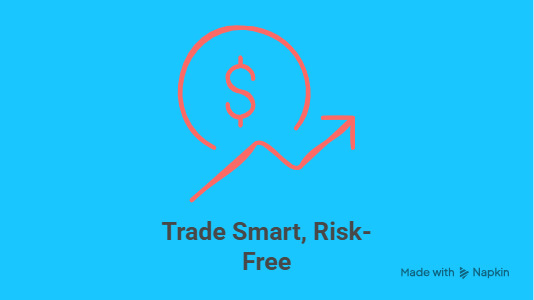
Yes, you absolutely can. Forex trading without money is not just a myth—it’s a proven way many successful traders begin their journey.
How to Trade Forex for Free?
The key lies in demo accounts. These are free trading accounts provided by brokers that allow you to practice real forex trading using virtual money. You trade on live market data, use real platforms like MetaTrader 4 or 5, but with zero financial risk.
According to a 2024 survey by DailyFX,
“Over 60% of new traders begin with demo accounts to build skills before investing real money.”
Ways to Trade Forex Without Money:
Demo Accounts Offered by brokers like IG, Pepperstone, or Exness. No deposit needed.
No-Deposit Bonuses Some brokers offer limited-time bonuses to start trading live without funding your account (T&Cs apply).
Trading Contests Participate in free demo trading competitions to win real cash or funded accounts.
While you can’t earn real profits from demo accounts, you can gain real experience—which is priceless. Once you're confident, you can go live with as little as $10 on some platforms.
#forex#forex trading#forex trading free#free forex tradig#forextrading#forex expert advisor#forex trading tips#forex market
0 notes
Text
Discover the Best Forex Trading Courses in the USA & UK
Introduction to Forex Trading Education
What is Forex and Why Should You Learn It?
The foreign exchange (Forex) market is the largest and most liquid financial market in the world. With trillions traded daily, there’s an immense opportunity for those who know how to navigate it. Whether you're looking to start a side hustle or switch careers, enrolling in the best Forex trading courses can be your gateway to financial independence.
The Rise of Online Forex Courses in the USA & UK
The demand for flexible, accessible, and professional trading education has skyrocketed. People from New York to London are turning to Forex online courses to learn practical skills from the comfort of their homes.
What Makes the Best Forex Trading Courses Stand Out?
Real-Time Market Training
The best courses teach you how to trade in live markets—not just in theory, but through examples and hands-on practice.
Practical Application with Demo Accounts
Learning how to place trades and use platforms like MetaTrader 4/5 is essential. Good courses offer real demo simulations.
Lifetime Access and Community Support
Forex trading is a long journey. Top platforms offer lifetime content updates and communities where you can ask questions and grow with others.
Why Choose Online Learning for Forex?
Learn Anywhere, Anytime
Whether you’re in the USA or UK, online learning removes time zone and location barriers.
Learn at Your Own Pace
Busy schedule? No problem. Pick up where you left off, whenever you're ready.
Learn from Real Traders
Top-rated courses are taught by professional traders who walk the talk—not just theorists.
The Key Features of the Best Forex Trading Courses
Technical and Fundamental Analysis
From chart patterns to economic news, you'll learn how to read the market like a pro.
Trading Psychology
Understand how emotions affect decisions and how to build the mindset of a successful trader.
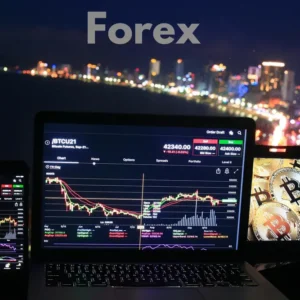
Risk and Money Management
Discover how to manage trades, protect your capital, and grow your account steadily.
The Best Forex Trading Courses in the USA & UK
Coursocean.co – Leading the Way
Coursocean offers some of the best Forex trading courses for learners in the USA and UK. Their curriculum is built to take you from complete beginner to confident trader, with modules covering everything from strategy to psychology.
Other Reputable Platforms
Babypips (great for theory)
Udemy (low-cost intro courses)
Forex.com Academy (platform-based learning)
But if you're looking for comprehensive and focused Forex education, Coursocean delivers.
Why Coursocean Offers the Best Forex Trading Courses
Expert-Led Content
All courses are crafted and taught by experienced traders who have worked in real markets.
Structured Beginner to Advanced Paths
You won’t get lost. Coursocean guides you step-by-step, helping you build solid knowledge as you go.
Certificate of Completion for Your Resume
After completing any course, you receive a professional certificate—great for LinkedIn or job applications.
Courses Available at Coursocean
Forex Trading for Beginners
Covers the basics: how the Forex market works, common terminology, and how to place your first trade.
Advanced Forex Strategy & Analysis
Take your skills to the next level with technical analysis, Fibonacci tools, and advanced entry/exit methods.
Live Market Analysis & Mentorship
Get weekly sessions analyzing the current market and learning strategies used by professionals.
Who Can Benefit from Forex Trading Courses?
Complete Beginners
If you’re new to trading, these courses will give you a clear and structured foundation.
Self-Taught Traders Needing Structure
Even if you’ve tried learning on your own, a formal course like Coursocean’s can fill the gaps.
Career Changers & Side Hustlers
Looking to make Forex your next career move or income stream? These courses can get you there.
Learning Outcomes from the Best Forex Trading Courses
How to read and analyze charts
How to use indicators and draw trendlines
How to create and test your own strategies
How to avoid common beginner mistakes
How to stay consistent in your trading
Student Reviews and Success Stories
“I went from total confusion to placing confident demo trades in 3 weeks thanks to Coursocean!” – Tom, USA
“The way they explain technical analysis is so clear. I finally understand RSI and Fibonacci levels.” – Lisa, UK
How to Get Started with Coursocean Today
Quick Sign-Up Process
Just head to Coursocean.co, create an account, and explore their full course catalog.
Choosing the Right Course
Start with the “Forex for Beginners” course and build your skills at your pace.
Common Mistakes to Avoid When Starting Out
Skipping the Basics
Understanding the fundamentals is crucial. Don’t rush into trading real money.
Trading Emotionally
Fear and greed ruin many traders. Learn to manage your emotions early on.
Overtrading Without a Plan
You need a solid strategy. Random trades lead to random results.
What to Look for When Choosing a Forex Course
Transparent Results and Reviews
Look for platforms that show real testimonials and reviews.
Ongoing Support and Updates
The market changes. So should your learning materials.
Future Trends in Forex Education
AI and Personalized Learning Paths
Imagine learning tailored just for your skill level and progress. It’s coming, fast.
Mobile-First Learning for Traders on the Go
Most platforms are optimizing for mobile so you can learn and trade from anywhere.
Conclusion
Whether you're just starting out or looking to refine your trading edge, the best Forex trading courses can make a huge difference. For those in the USA and UK, platforms like Coursocean.co offer the perfect blend of professional guidance, flexibility, and value. Don't waste time guessing—start learning Forex the right way
0 notes
Text
The biggest financial market in the world is at your fingertips. With a registered account, you may buy and sell currencies for profit. The broker is your middleman providing access, tools, and support. It also processes all financial transactions, so finding a reliable company is crucial. It is one of the crucial decisions for a trader. Whatever the strategy, if the intermediary is dishonest, your hard work will be futile. These top Forex brokers in Indonesia offer excellent support and free education. Here are their biggest strengths. Official Licensing Steer clear of brokers without an official license. Authorized companies comply with crucial industry norms, such as negative balance protection. Even with a failed strategy, you will never owe the broker any money. As many instruments are traded on margin (i.e., with the use of borrowed funds), this measure is vital. They may be authorized by one or more organizations and jurisdictions. Common examples are the CySEC in Cyprus and the FCA in the United Kingdom. Licensing is mandatory regardless of local Forex laws. Demo Trading Another sign of a reliable broker is the opportunity to test its software for free. Usually, you need to fill in a simple form to get a login and password. These are emailed to you immediately so you can enter them on the terminal. The credentials will unlock the system in a special training mode. All the features are usable, but no real deposits or withdrawals are possible. The point is to practice with a virtual balance. You may explore this system at your own pace before risking any capital. With distinguished brokers, demos are always free and unlimited. Mix of Markets Today, a Forex broker does not limit its offerings to currencies. In addition to dozens of Majors, Minors, and Exotics, you may trade precious metals, stocks, and derivatives like CFDs. For traders, this translates into easy portfolio assembly. To limit risks and maximize gains, they may diversify exposure, engaging increasingly more instruments. Low Minimum Deposit While demos are absolutely free, the real market is cheap to enter. Some brokers allow you to begin with $10. The opportunity to start small is invaluable, as novices limit their risks. Modest capital does not allow high profits from the get-go, but it protects you from excessive losses while you are still gaining experience. Flexible Software The best software for currency traders ensures flexible access. You may use desktop software, mobile apps, or web-based systems that open directly inside browsers. Switch between devices easily, as all of them connect to the same cloud-based servers. Top brokers may offer proprietary software or stick to universal systems like MetaTrader 5. Your Perfect Intermediary Unscrupulous brokers deceive their clients to seize their deposits. Be extra careful when searching for a provider. Choose only regulated brands with a positive reputation. Generally, global brokers have a competitive edge, as they cater to a vast audience.
0 notes